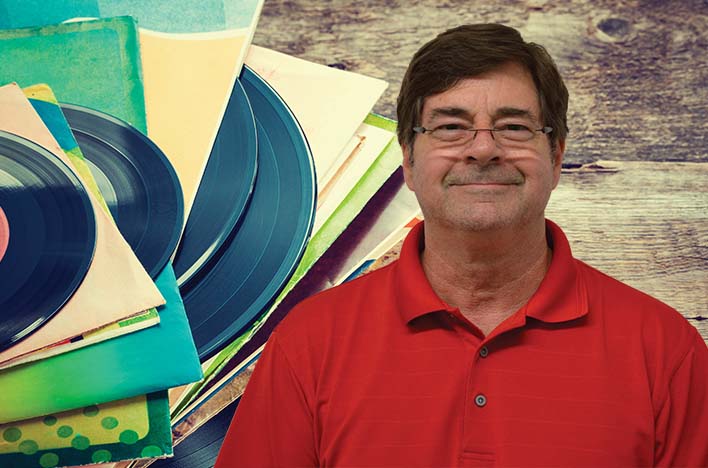Resurgence in popularity of vinyl LPs creates new business opportunity.
Entrepreneur // Steve Chase
Company Information // GrooveWasher LLC | 1313 Atlantic Ave., North Kansas City, MO 64116 | (913) 226-7845 | www.GrooveWasher.com
Type of Business // Vinyl LP cleaning system
Snap, crackle, pop may be catchy as a cereal jingle, but it’s anything but music to the ears of vinyl LP collectors.
Usually it’s a sign of poor audio quality—often due to a buildup of dust, dirt, fingerprint oils and static electricity.
Serial entrepreneur Steve Chase, who is also an investor in the startup Handy Camel, decided to solve the problem by developing a vinyl record cleaning product based on a 1970s product that he says “got kind of lost.” Chase’s prototype proved so popular that in 2015 he founded a company—GrooveWasher—to manufacture and sell the product.
“Our passion is to help people experience the highest fidelity sound a record can produce. That can only happen if the record groove is clean,”
said Chase.
Making Records Sing
Chase’s love for music began as a young boy growing up in Southern California. During the middle of the night, he would listen to his dad’s jazz and classical LP collection on his turntable.
In the early 70s, a friend showed Chase a new record cleaning tool he had invented. The cleaning fluid dissolved fingerprint lipids and removed mildew. The tool itself featured a cleaning pad made of a directional fiber fabric that was attached to a solid walnut handle. The product—which became the “Discwasher”—soared in popularity. Chase’s family was involved in the company, but in 1982, it was sold and vinyl gave way to cassettes and CDs.
A Vinyl Revival
In 2010 Chase’s son, a sound/recording engineer and musician, told Chase that bands were releasing their music on vinyl again. Chase decided to create his own record cleaning fluid, inspired by his friend’s popular D Series fluids.
Chase’s updated product uses a high-tech G2 fluid that has a low surface tension, allowing the fluid to penetrate to the bottom of an LP’s microgroove. G2 Fluid uses surfactants and wetting agents that were not available in the ’70s.
Chase introduced major innovations to the cleaning pad too. The GrooveWasher cleaning pad can be replaced or cleaned because it is attached to the handle with Velcro, unlike the original cleaning pad that was permanently glued. The cleaning pad itself uses split fiber microfiber, a fabric that wasn’t commercially available in the ’70s.
The GrooveWasher cleaning fluid and handles are manufactured at the company’s plant in North Kansas City. GrooveWasher Kits are available in various colors, including the traditional walnut.
GrooveWasher products are online and in record and audio stores locally and nationally.
Chase said that the GrooveWasher project’s goal was to update the most popular record cleaning tool of the ’70s and offer it to the 20-30 million people globally who own turntables and love playing vinyl records. “Our customers tell us we succeeded. But it’s not like we invented something new,” Chase said. “We built a better mousetrap.”


